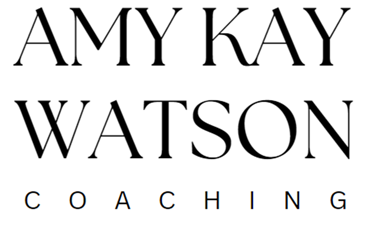
Table of Contents
- Why Do People Care So Much About Empathy in Leadership?
- How Can I Lead with Empathy Without Losing Accountability?
- A 5-Step Process for Empathetic Accountability
- Final Reflection
- FAQ
Why Do People Care So Much About Empathy in Leadership?
This article is about something you probably already know in your gut—but maybe haven’t quite named yet. Empathy isn’t optional anymore.
I love this quote that opens the article: “The highest form of knowledge is empathy.” It’s poetic, yes—but also incredibly grounding. Especially for those of us who lead or manage knowledge workers. That quote calls us into something deeper. We’re living in a time of ongoing volatility, where everything feels fragile. And what this quote reminds me is that in times like this, people don’t need more information or advice or hot takes. They need connection.
I was also really struck by the data. It reminded me of those studies where “most people say they’re better-than-average drivers.” It’s a joke—but it’s also a real human blind spot. The same dynamic shows up in empathy. In the 2024 State of Workplace Empathy report, 55% of CEOs said they lead with empathy. But only 28% of employees—and just 22% of HR professionals—agreed. That’s a disconnect we need to take seriously.
Now, you’re probably not a CEO. Most of my readers aren’t. But I still want to invite you into the same kind of reflection. Is it possible that you, too, are overestimating your ability to lead with empathy? Because the question isn’t whether you should lead with empathy. You already know that answer. The real question is: Are you doing it as much as you think you are?
How Can I Lead with Empathy Without Losing Accountability?
Let me be clear—this section isn’t for the folks who already lead with so much empathy that they’ve become the team doormat. If that’s you, what you need isn’t more empathy strategies. What you need is more structure, clarity, and support in holding others accountable. We can talk about that, too—but not here.
This list is for the leaders who have clarity, who know how to drive outcomes, but who might be missing some of the human signals along the way.
First, zoom in and actually listen.
Set aside everything else running in your mind and give your full attention to what your team member is saying. Don’t jump to solutions. Ask questions. Not to steer the conversation—but to genuinely understand what’s bugging them.
Try – “What’s weighing on you the most right now?”
Second, check your double standards.
Do you give yourself more grace than you give others? For instance, if you miss a deadline, do you expect understanding—but when they miss one, you get rigid? If so, trust is eroding. A better move is to co-create the expectations: “Here’s the deadline. If something comes up, let’s talk about what we’ll each do.” That builds partnership, not pressure. (And don’t go rushing them to complete something before your deadline. Instead, try “How are you pacing toward Wednesday’s deadline?”)
Third, tune in to the song beneath the words.
Observe how your people are doing. Are they tired? Distracted? Frustrated? Look beyond the surface. If you’re noticing something, ask. You don’t have to diagnose or fix—just check in and be present with what’s real.
Try – “You’ve seemed quieter this week. Anything you’d like me to know about how things are going?”
Fourth, manage to the middle.
It’s easy to give all your attention to the most vocal or the ones who are visibly struggling. But the folks in the middle—those steadily carrying the load—need you, too. They may not ask for help. Don’t assume they’re fine. Definitely don’t assume they can take on more just because they’re quiet.
Try – “How can I support this person without overburdening the others?”
Fifth, ask before you solve.
One of the biggest traps I see in leaders is the temptation to jump into solutions too fast. Just because you are familiar with the issue doesn’t mean you fully understand why it’s being brought up now. Ask what they’ve already tried, what they’re thinking about, what roadblocks they’re hitting. You’ll support more effectively—and they’ll feel more seen.
Try – “What would make a difference for you here—and how can I help you access it?”
Sixth, get curious when someone pushes back.
If a team member questions your approach or shares concern, don’t assume it’s resistance. They’re grappling with something. You don’t have to defend yourself or the company. You just need to listen, ask, and help them understand what they’re bumping into.
Try – “I may have missed something. What’s been your experience with this change?”
And finally—recognize the effort.
One of the most demoralizing things I hear from clients is, “I worked so hard—and no one even noticed.” Don’t just look at outcomes. Let people know what you see them doing. That kind of acknowledgment builds trust, motivation, and resilience—and it costs you nothing.
Try – “I saw how much you put into that launch. Let’s talk about what’s sustainable going forward.”
A 5-Step Process for Empathetic Accountability
- Pause before reacting
Notice your instinct to fix, defend, or rush. Choose to stay present. - Listen for emotion, not just facts
Ask clarifying questions that draw out the emotional reality behind the words. - Name what you notice
Reflect back both their challenge and their courage. - Co-create next steps
Don’t shoulder the whole load—build accountability through shared ownership. - Check in after the fact
Empathy doesn’t end at the decision. Follow up to show you care and stay curious.
Final Reflection
Jody Michael’s article at Forbes underscores what many empathy-driven leaders have already felt: that our workplaces are not suffering from too much sensitivity, but from too little connection. In a world of relentless change, accountability alone won’t carry teams through—empathetic presence must be its partner. That doesn’t mean lowering expectations; it means raising your awareness. When leaders show up with genuine care and curiosity, teams become more resilient, more collaborative, and more capable of rising to the challenge.
Want to bring more of this into your leadership? Let’s talk.
Author Bio
Amy Kay Watson is a Master Certified Coach (MCC) and a champion for empathy and compassion in performance improvement. She helps leaders manage accountability with clarity and kindness across sectors from tech to government. Learn more about Amy.
FAQ
What does empathetic leadership actually look like day-to-day?
It looks like listening without interrupting, respecting people’s time, asking before assuming, and acknowledging effort. It’s subtle but powerful.
Can I still hold people accountable if I lead with empathy?
Yes—and you’ll do it better. Empathy strengthens trust, which makes accountability conversations more productive and less threatening.
How do I know if I’m being empathetic enough as a leader?
If you’re unsure, ask. Feedback from your team will tell you whether your empathy is landing—or whether it’s getting lost in your good intentions.
Is empathy just about being nice?
Not at all. It’s about understanding someone’s experience so you can lead them effectively, not just kindly.
What if I get too emotionally involved?
Empathy isn’t about absorbing others’ pain—it’s about being present and responsive without losing your clarity or role.

